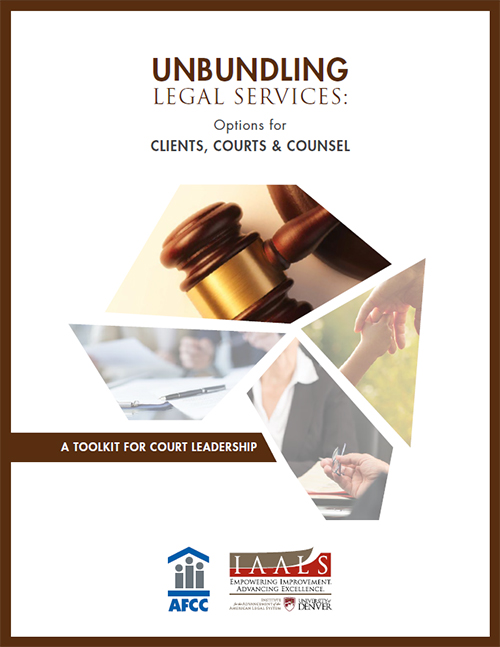 In 2010, the New York Times featured a call to action from two former state chief justices, who called upon the legal profession to promote the availability and use of unbundled legal services to help close an ever-widening “justice gap.” See John H. Broderick & Ronald George, A Nation of Do-It-Yourself Lawyers (2010).
In 2010, the New York Times featured a call to action from two former state chief justices, who called upon the legal profession to promote the availability and use of unbundled legal services to help close an ever-widening “justice gap.” See John H. Broderick & Ronald George, A Nation of Do-It-Yourself Lawyers (2010).
Unbundled legal services, in which a client hires an attorney for agreed-upon discrete tasks, is indeed a partial solution to the access to justice problem in our nation’s courts, and has become increasingly used and accepted in the last several decades. And, proponents believe that in cases involving divorce, separation, or parenting time, the use of unbundled legal services by parties who have never sought the advice of counsel can increase the number of prepared litigants and result in more available docket, court staff, and judge time.
Although unbundled legal services provide more flexibility to a litigant, and is usually far less costly than full service representation, too few attorneys offer it, and too many litigants do not know about it. While there are more attorneys offering unbundled legal services and a growing list of jurisdictions recognize it, the access crisis remains, the justice gap continues to widen, and too many litigants remain unaware of the option of seeking targeted legal assistance.
Securing access to justice in the court system is a fundamental goal and responsibility of judicial leadership. The support of the courts is absolutely essential in order for unbundled legal services to take hold. Chief justices and chief judges are uniquely positioned to help close the justice gap through hands-on encouragement and support of unbundled legal services within their respective jurisdictions.
The purpose of this toolkit is to provide judicial leaders quick access to information on unbundled legal services and ways to promote its availability and use. It is formatted to suggest alternative means by which chief justices, chief judges, clerks of court, court administrators, and other judicial leaders can encourage and support this legal services model to improve litigant outcomes, public trust and confidence, and court efficiency in cases involving divorce, legal separation, and parenting responsibilities.
Download the toolkit here, or access the materials online through the following sections:





